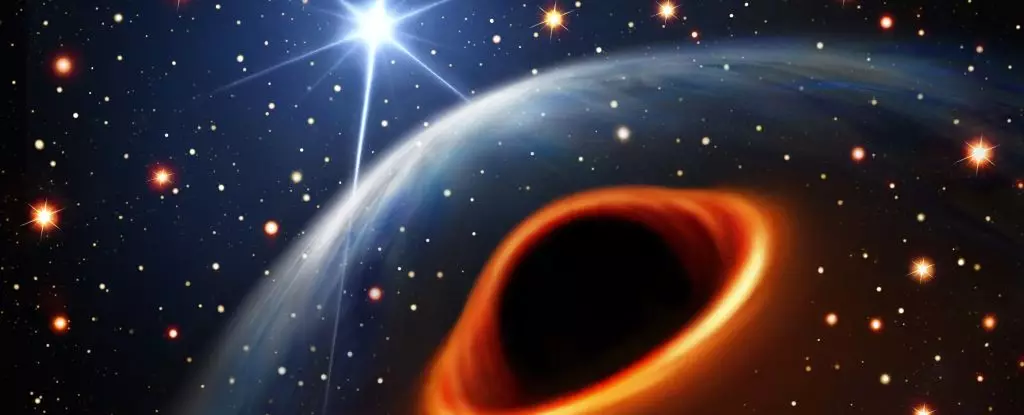Recent astronomical observations have unraveled a captivating mystery in the vast expanse of our galaxy. Approximately 5,825 light-years from Earth, researchers have detected a red giant star engaged in a peculiar orbital movement, suggesting a gravitational dance with an unseen companion. This celestial companion, however, remains shrouded in darkness, emitting no detectable light. Such enigmatic findings provoke a new wave of excitement in the quest to understand the universe, hinting at the existence of one of astronomy’s most elusive structures—a low-mass black hole.
Named G3425, this remarkable binary system poses intriguing questions about black hole formation and the very nature of these dense remnants of stellar evolution. Led by a team of astronomers under Song Wang from the Chinese Academy of Sciences, the research team utilized advanced observational tools, including the Large Aperture Multi-Object Spectroscopic Telescope, to reveal crucial details about the gravitational complexities of G3425. Their observations indicate the presence of an object roughly 3.6 times the mass of our Sun, supported by the unusual motion of the red giant star, which possesses an estimated mass of about 2.7 solar masses.
What makes G3425 particularly fascinating is that its invisible companion falls into a region known as the “mass gap,” a space in which few black hole candidates have been identified. This gap demarcates a significant boundary between the remnants of supernova explosions and stellar remnants that should not exist according to current models. The existence of a black hole of this size challenges previously held notions about black hole formation and evolutionary pathways, raising new questions about the mechanisms that create these acutely dense objects.
Black holes represent one of the universe’s most extreme entities, defined primarily by the gravitational collapse of massive stars post-fuel depletion. The typical lifecycle of a star transitions through stages wherein lighter stars become white dwarfs, an intermediate mass category birthing neutron stars, which can condense up to about 2.3 solar masses. Above this threshold, the relentless force of gravity ultimately results in the formation of black holes.
Yet remarkably, black holes detected below the five-solar-mass mark remain exceedingly rare. The apparent absence of low-mass black holes leads to speculation; researchers ponder whether we are merely incapable of detecting these objects or if intrinsic factors inhibit their formation. Furthermore, the elusive nature of black holes makes them particularly challenging to observe directly, as they emit no light unless actively consuming surrounding matter—a process that generates observable high-energy X-rays.
The Role of Gaia: Mapping the Galactic Landscape
Thanks to the European Space Agency’s Gaia mission, astronomers now have unprecedented access to a three-dimensional mapping of the Milky Way. By collecting data on the positions and velocities of stars, Gaia offers insights into previously hidden galactic interactions, allowing researchers to identify stars engaged in gravitational relationships with invisible partners like G3425. The stars themselves become indicators, their movements revealing the presence of the unseen masses with which they interact.
In the case of G3425, the red giant star’s stable and relatively wide orbit—approximately 880 days—contradicts typical behavior observed in binary systems housing black holes. More commonly, such systems exhibit elliptical or unstable orbits, often resulting from the catastrophic events that accompany a supernova explosion. G3425 may thus suggest a new paradigm in our understanding of binary systems and the lifecycle of black holes.
The detection of G3425 opens doors to further inquiry into the population of low-mass black holes that may exist throughout the galaxy. As astronomers pursue the identification of other black holes that exhibit similar characteristics, they may illuminate divergent formation processes shaped by varying stellar histories. Such systematic research may lead to a deeper comprehension of the universe’s structure and the cosmic balance between stellar life cycles.
G3425 stands not simply as an isolated discovery but as a key to broader questions regarding black holes. With continued advancements in observational astronomy and the utilization of cutting-edge technologies, we may soon find ourselves unraveling a plethora of cosmic mysteries, illuminating the intricate tapestry of the universe and enriching our understanding of the phenomenal forces at play in the cosmos.

